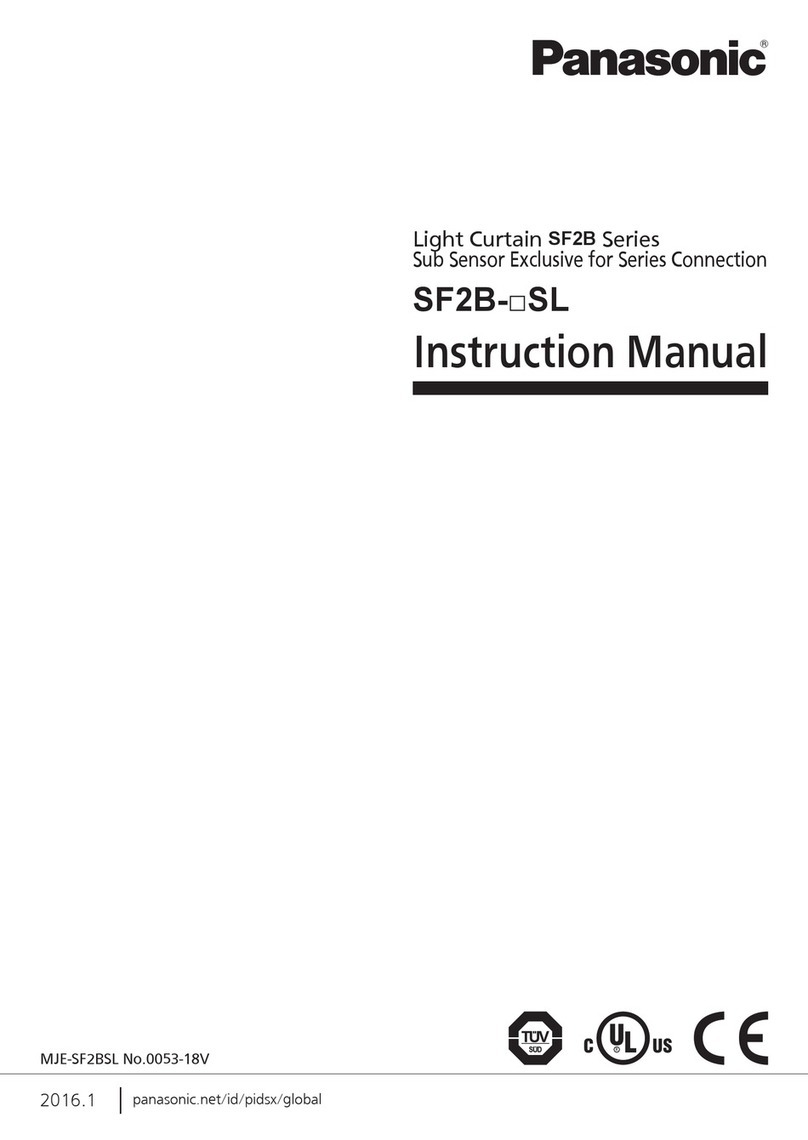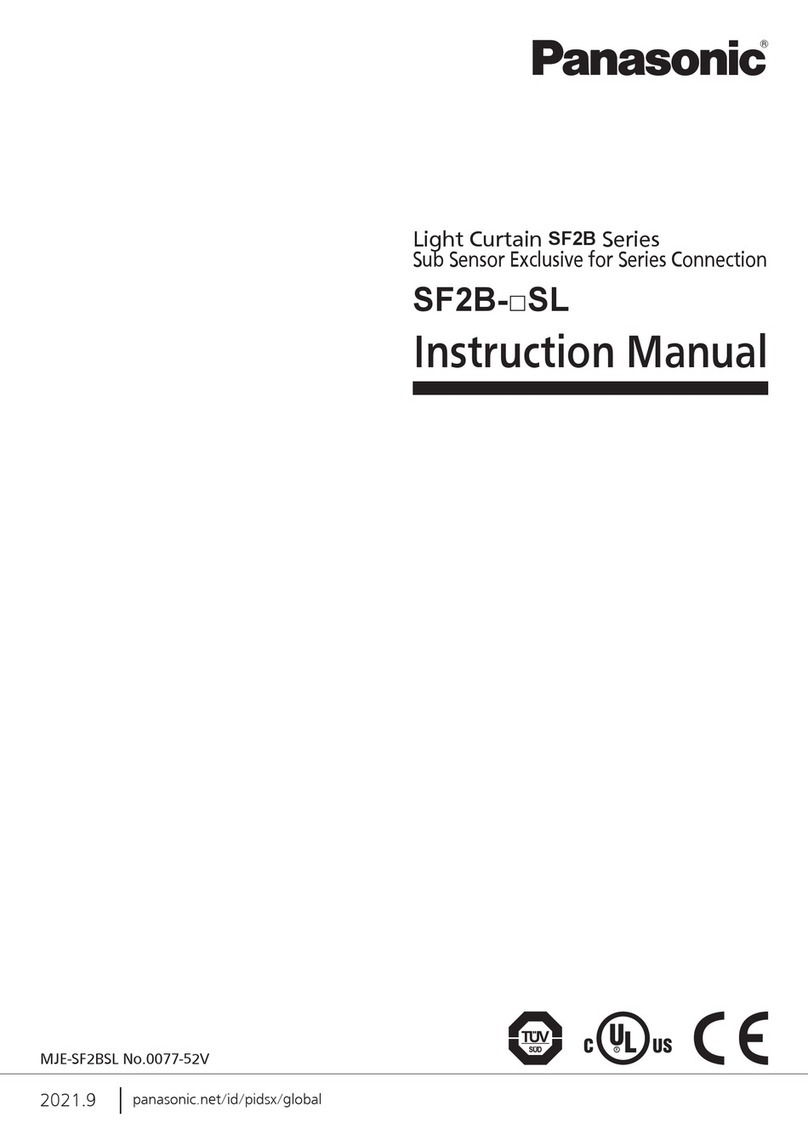
7© Panasonic Industrial Devices SUNX Co., Ltd. 2016
♦Machine designer, installer, employer and operator
●The machine designer, installer, employer and operator are solely responsible to en-
sure that all applicable legal requirements relating to the installation and the use in any
application are satised and all instructions for installation and maintenance contained in
the instruction manual are followed.
●Whether this device functions as intended to and systems including this device comply
with safety regulations depends on the appropriateness of the application, installation,
maintenance and operation. The machine designer, installer, employer and operator are
solely responsible for these items.
♦Engineer
●The engineer would be a person who is appropriately educated, has widespread knowl-
edge and experience, and can solve various problems which may arise during work,
such as a machine designer, or a person in charge of installation or operation etc.
♦Operator
●The operator should read this instruction manual thoroughly, understand its contents,
and perform operations following the procedures described in this manual for the cor-
rect operation of this device.
●In case this device does not perform properly, the operator should report this to the per-
son in charge and stop the machine operation immediately. The machine must not be
operated until correct performance of this device has been conrmed.
♦Environment
●Do not use a mobile phone or a radio phone near this device.
● If there exists a reective surface in the place where this device is to be installed, make
sure to install this device so that reected light from the reective surface does not enter
into the receiver, or take countermeasures such as painting, masking, roughening, or
changing the material of the reective surface, etc. Failure to do so may cause the de-
vice not to detect, resulting in death or serious injury.
●Do not install this device in the following environments.
1) Areas exposed to intense interference (extraneous) light such as high-frequency uo-
rescent lamp (inverter type), rapid starter uorescent lamp, stroboscopic lights or direct
sunlight.
2) Areas with high humidity where condensation is likely to occur
3) Areas exposed to corrosive or explosive gases
4) Areas exposed to vibration or shock of levels higher than that specied
5) Areas exposed to contact with water
6) Areas exposed to too much steam or dust
♦Installation
●Always keep the correctly calculated safety distance between this device and the dan-
gerous parts of the machine.
●Install extra protection structure around the machine so that the operator must pass
through the sensing area of this device to reach the dangerous parts of the machine.
●Install this device such that some part of the operator’s body always remains in the
sensing area when operator is done with the dangerous parts of the machine.
● Do not install this device at a location where it can be affected by wall reection.
●When installing multiple sets of this device, connect the sets and, if necessary, install
some barriers such that mutual interference does not occur. For details, refer to “2-3-4
Device Placement” and “3-4 Interference Prevention Function.”
● Do not use this device in a reective conguration.
●The corresponding emitter and receiver must have the same serial No. and be correctly
oriented.
































